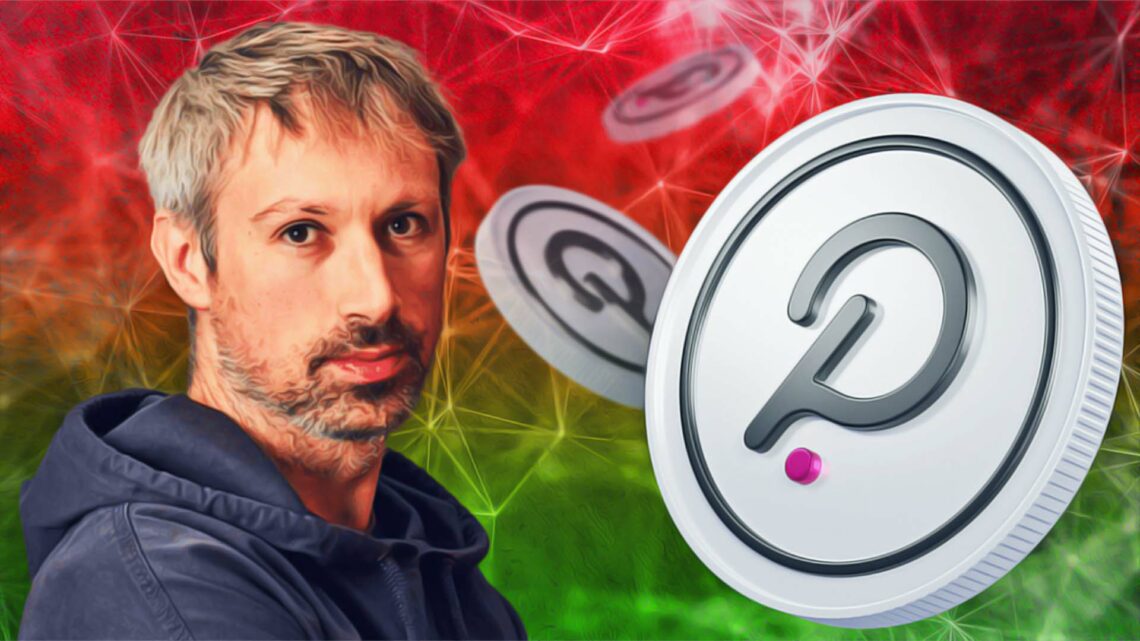- 1 Gavin Wood shared a vision for the future Polkadot at its biggest event of 2023.
- 2 Wood is envisioning the ecosystem as a global, multi-core supercomputer.
Dr. Gavin Wood, the co-founder of blockchain ecosystem, Polkadot, made a surprise appearance at Polkadot Decoded 2023, the biggest Polkadot event of the year. He outlined “a vision for the future Polkadot,” and also shared “a new perspective on Polkadot.”
@gavofyork shared a vision for the future of Polkadot at @PolkadotDecoded this week in Copenhagen, envisioning it as a global, multi-core supercomputer.
— Polkadot (@Polkadot) June 30, 2023
Watch the presentation to learn more:https://t.co/aSyPKGLn8u
Gavin Wood Comes with Futuristic Vision for Polkadot
On June 30, 2023 Friday, in its official YouTube channel, Polkadot shared a video in which Gavin Wood talks about Polkadot 1.0, its parachain and relay chain. He clarifies that Polkadot is ultimately a platform for people to develop applications to be used by users. It is not the platform to host the chains. Chains happen to be one of the ways we get to help Polkadot useful, he added.
As per the new perspective on what Polkadot is, Wood noted it as “a provider of maximally-resilient, general-purpose continuation computation. The Polkadot Relay-chain is the foundation of the Ubiquitous (Multicore) Supercomputer.”
Gavin Wood also mentioned Polkadot Core as its Supercomputer, having approximately 50 cores now. Its models suggest it can grow to 500-1,000 cores in the next few years as optimizations are made.
Wood further added that users consider running smart contracts directly on cores. As cores can be used to secure not just parachains; “smart contracts” may also be hosted. It can avoid the need for custom chain infrastructure. It is effective for contracts with constrained state and I/O and heavy compute requirements.
Cores can be compressed, as it verifies many blocks on a core to allow higher block rates and lower apparent latency, as Wood mentioned. On the other hand, cores can be combined as multiple cores can be used for greater compute power; either instantaneously or in the long-term.
Polkadot 1.0
Gavin Wood added Polkadot 1.0 is also “a chain centric paradigm”, as the isolated chains become able to exchange messages. It is quite similar to bridged sovereign chains, and also provides results in UXs isolated to a single chain. Meanwhile, the apps must seamlessly span chains in order to unlock Polkadot’s potential.
Polkadot is not a relay chain in the middle and parachains on the other side. In reality, Polkadot should be an integrated system, a single computer on which any application runs. But, there are some important boundaries between different business logic-components of the chain, roughly called parachains, as Wood explained.
The co-founder of Polkadot also talked about XCM, which is a language. It abstracts over common functionality in chains. As he added, “nice chains faithfully interpret XCM but unfortunately there are no guarantees that chains will faithfully interpret the user’s XCM message.” XCM is not ideal if the user is in a”trustless environment.”

Andrew is a blockchain developer who developed his interest in cryptocurrencies while pursuing his post-graduation major in blockchain development. He is a keen observer of details and shares his passion for writing, along with coding. His backend knowledge about blockchain helps him give a unique perspective to his writing skills, and a reliable craft at explaining the concepts such as blockchain programming, languages and token minting. He also frequently shares technical details and performance indicators of ICOs and IDOs.


 Home
Home News
News









